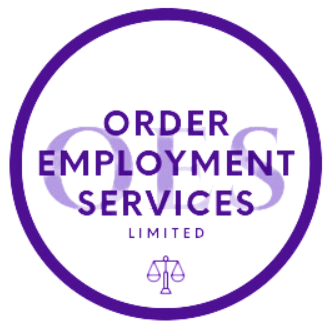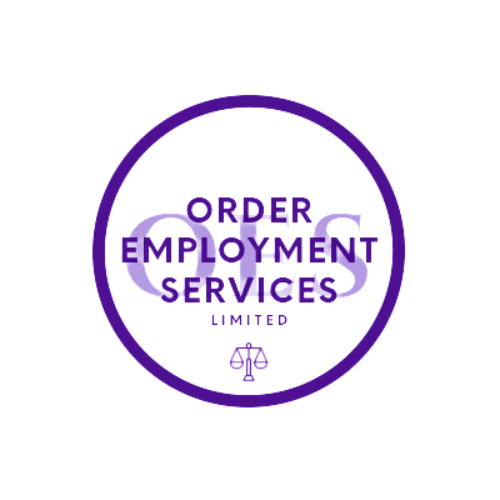
Optimising Workforce Productivity with the Hay Method of Job Evaluation
Reduce operational costs
Increase profitability
Improve efficiency
Achieve business aims
In your quest for organisational success, clarity and fairness in job roles and compensation are paramount. Yet, establishing a fair and transparent pay structure remains a challenge for many employers. Enter the Hay Method of Job Evaluation, a beacon of hope for employers striving to navigate the complexities of compensation and job valuation. This method offers a systematic approach to understanding and evaluating job roles, ensuring employees are rewarded in line with their responsibilities and contributions to the Company.
At its core, job evaluation using the Hay Method is not only about assigning monetary value to job roles; it's about creating an environment where every employee feels valued and fairly compensated. This fosters a culture of certainty and motivation, paving the way for enhanced productivity and job satisfaction. By accurately assessing job functions and determining pay levels, companies can cultivate a workforce that is both motivated and aligned with the organisation's goals and values.
As we delve deeper into the intricacies of the Hay Method, we'll explore how it assesses job roles based on three critical factors: know-how, problem-solving, and accountability. This evaluation framework not only aids in making informed compensation decisions but also ensures that these decisions are equitable and reflective of each role's complexity and impact.
The journey towards a more motivated and productive workforce begins with a thorough understanding of job evaluation and its significance. Through the Hay Method, businesses can achieve a balance between fair compensation and organisational efficiency, setting the stage for sustained growth and employee engagement. Join us as we uncover the steps to implementing this robust evaluation method and how it can transform your approach to job valuation and compensation.
Understanding Job Evaluation using the Hay Method
Job evaluation stands as a critical process in HR management, aiming to establish a fair, equitable pay structure across an organisation. The Hay Method emerges as a leading strategy in this domain, providing a structured approach to evaluating the worth of job positions. By focusing on three principal factors—know-how, problem-solving, and accountability—this method offers a comprehensive framework to accurately assess job roles.
Know-how
This factor encompasses the breadth and depth of knowledge, skills, and experience required to perform a job effectively. It's not merely about academic qualifications; it also considers the practical skills, technical knowledge, and managerial capabilities essential for the role. The Hay Method meticulously evaluates the know-how needed, ensuring that roles requiring higher levels of expertise and skill are recognised and valued accordingly.
Problem-Solving
Here, the method assesses the complexity of challenges that employees face and the ingenuity required to overcome them. It's about understanding the nature of issues encountered in the role and the extent to which employees must analyse, innovate, and apply knowledge to devise effective solutions. This factor appreciates the cognitive efforts and creativity employees bring to their roles, aligning compensation with the problem-solving demands of their positions.
Accountability
The final factor evaluates the level of responsibility carried by the role, considering the impact of an employee's decisions on the organisation's success. This includes assessing the degree of autonomy, the scope of influence on operational or strategic outcomes, and the direct or indirect consequences of decision-making. The Hay Method ensures that roles with greater accountability, which significantly contribute to the organisation's performance and risk management, are duly recognised in the compensation framework.
By integrating these factors, the Hay Method of Job Evaluation goes beyond traditional job analysis. It provides a nuanced, equitable approach to valuing job roles, laying the groundwork for fair and motivating compensation strategies. This method not only aids in making compensation decisions but also plays a crucial role in strategic HR planning, employee retention, and overall organisational development.
Understanding and implementing the Hay Method requires a commitment to fairness, transparency, and strategic HR management. As we proceed, we'll explore how this job evaluation method can create an environment of certainty and drive productivity within your workforce, highlighting its impact on compensation decisions and organisational harmony.
The Impact of Certainty on Productivity
The relationship between job certainty and workforce productivity is both profound and pivotal. Certainty in job roles and expectations not only fosters a positive work environment but also significantly boosts employee motivation and productivity. When employees have a clear understanding of their roles, responsibilities, and how their work contributes to the larger organisational goals, they are more engaged, motivated, and productive.
Creating an Environment of Certainty
Clear Job Descriptions: Implementing the Hay Method starts with creating detailed job descriptions that accurately reflect the know-how, problem-solving, and accountability required for each role. This clarity helps employees understand their responsibilities and how their performance impacts the organisation.
Fair Compensation: By ensuring that pay levels are accurately aligned with the job's demands and responsibilities, employees feel valued and fairly treated. This perceived fairness is crucial for employee satisfaction and motivation.
Performance Expectations: Establishing clear performance expectations based on the comprehensive evaluation of job roles encourages employees to meet and exceed these benchmarks, driving productivity.
Boosting Productivity
Reduced Turnover: Fair and transparent compensation reduces employee turnover. Recruiting and training new staff is costly and time-consuming. By retaining experienced employees, organisations maintain productivity and institutional knowledge.
Motivation and Morale: Knowing that their roles are evaluated fairly and that there's a direct correlation between their contributions and compensation boosts employee morale. A motivated workforce is a productive one, as employees are eager to contribute their best to the organisation.
Employee Engagement: A transparent job evaluation process and fair compensation system enhance employee engagement. Engaged employees are more likely to be committed to their work and the organisation, leading to higher productivity levels.
Implementing the Hay Method in Your Business
Implementing the Hay Method of Job Evaluation requires a structured approach and careful planning. Here's a step-by-step guide to integrating this method into your organisation's HR practices:
Job Analysis: Begin with a thorough analysis of each job role within your organisation, focusing on the duties, responsibilities, and outcomes expected from each position.
Gather Data: Collect detailed information on the know-how, problem-solving, and accountability aspects of each job. This involves interviewing job holders and their managers and reviewing job documentation.
Evaluate Jobs: Apply the Hay Method to evaluate jobs based on the collected data. This involves scoring each role according to the three factors and placing them within a hierarchy that reflects their relative value to the organisation.
Develop Pay Structure: Use the results of the job evaluation to develop a fair and equitable pay structure. Ensure that the pay levels reflect the value and complexity of each job as determined by the evaluation.
Communicate and Implement: Transparently communicate the process and outcomes of the job evaluation to all employees. Implement the new pay structure, addressing any concerns and making adjustments as necessary.
Making Compensation Decisions with the Hay Method
The Hay Method provides a solid foundation for making informed and fair compensation decisions. By accurately evaluating the value of job functions within an organisation, HR managers can ensure that pay levels are both competitive and equitable.
Aligning with Market Rates: Incorporate market salary data to ensure your compensation decisions are competitive externally while reflecting the internal value of each role as determined by the Hay Method.
Rewarding Performance: Beyond base pay, the Hay Method can inform performance-based pay decisions, ensuring that rewards are aligned with the role's value and the individual's contribution to the organisation.
Strategic HR Planning: Use the insights gained from the Hay Method evaluation to inform broader HR strategies, including talent development, succession planning, and organisational design
FAQs on Job Evaluation using the Hay Method
Q: How does the Hay Method compare to other job evaluation methods?
A: The Hay Method is distinguished by its focus on three universal factors (know-how, problem-solving, and accountability), making it applicable across different sectors and job types. It's particularly valued for its systematic and comprehensive approach to evaluating job worth.
Q: How often should job evaluations be conducted?
A: Regular reviews are essential to ensure the job evaluation remains accurate and relevant. It's recommended to conduct evaluations at least every two to three years or whenever significant changes in job roles occur.
Q: Can small businesses benefit from the Hay Method?
A: Absolutely. While the Hay Method is scalable and can be applied to organisations of any size, small businesses can particularly benefit from its structured approach to ensure fairness and clarity in compensation, which is crucial for attracting and retaining talent.
Bringing It All Together
The Hay Method of Job Evaluation stands as a cornerstone for creating a fair, transparent, and motivating work environment. By accurately assessing the value of job roles and aligning compensation accordingly, organisations can foster a culture of certainty and recognition. This, in turn, drives productivity, employee engagement, and organisational success. Implementing the Hay Method requires commitment and careful planning, but the benefits far outweigh the efforts, making it a valuable investment in your organisation's future.
Embracing the Hay Method is not just about adopting a new job evaluation system; it's about committing to a culture of fairness, transparency, and respect for the contribution of every employee. As businesses strive to navigate the complexities of the modern workplace, the Hay Method provides a proven framework for enhancing productivity, motivation, and employee satisfaction.
Taking the Next Steps
Now that you're equipped with this knowledge, it's time to take action. Review your reward practices, consult with legal and HR experts, and consider how speaking with an expert can aid in your reward process.
For Continuous Learning: Subscribe to our newsletter to stay updated on the latest in employment law and HR best practices.
For a Deeper Dive: Download our comprehensive eBook for HR Mastery and more detailed insights and guidance.
For Personalised Support: Contact us to schedule a consultation and discuss how we can assist with your specific HR needs.
With these resources and a commitment to strategic HR management, your SME can not only comply with the law but also create a work environment that fosters growth, innovation, and employee satisfaction.



